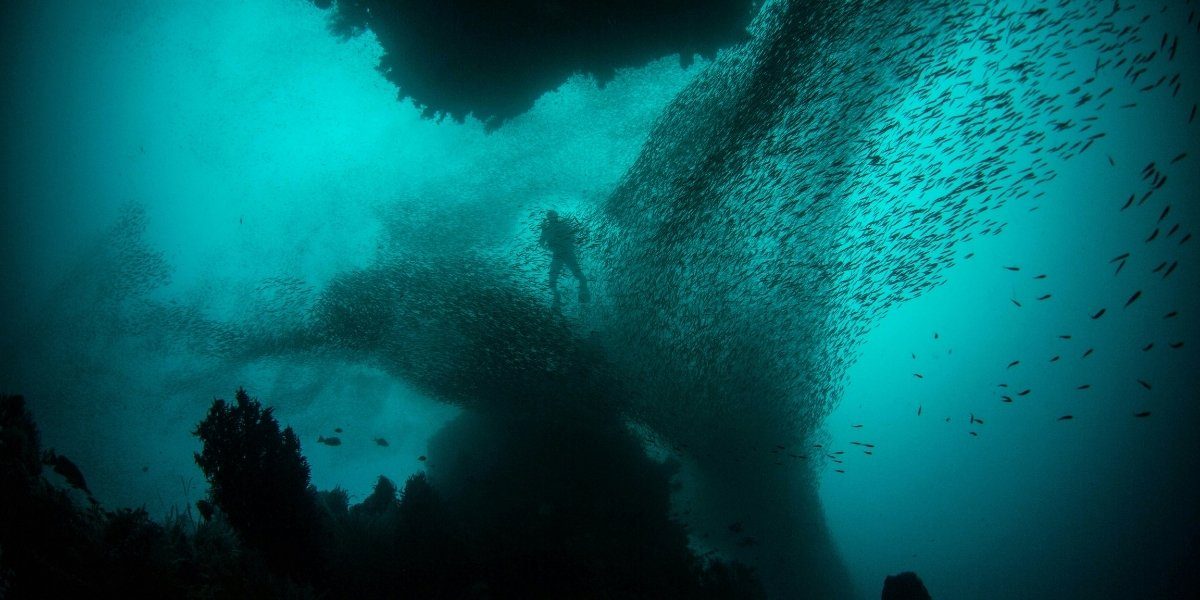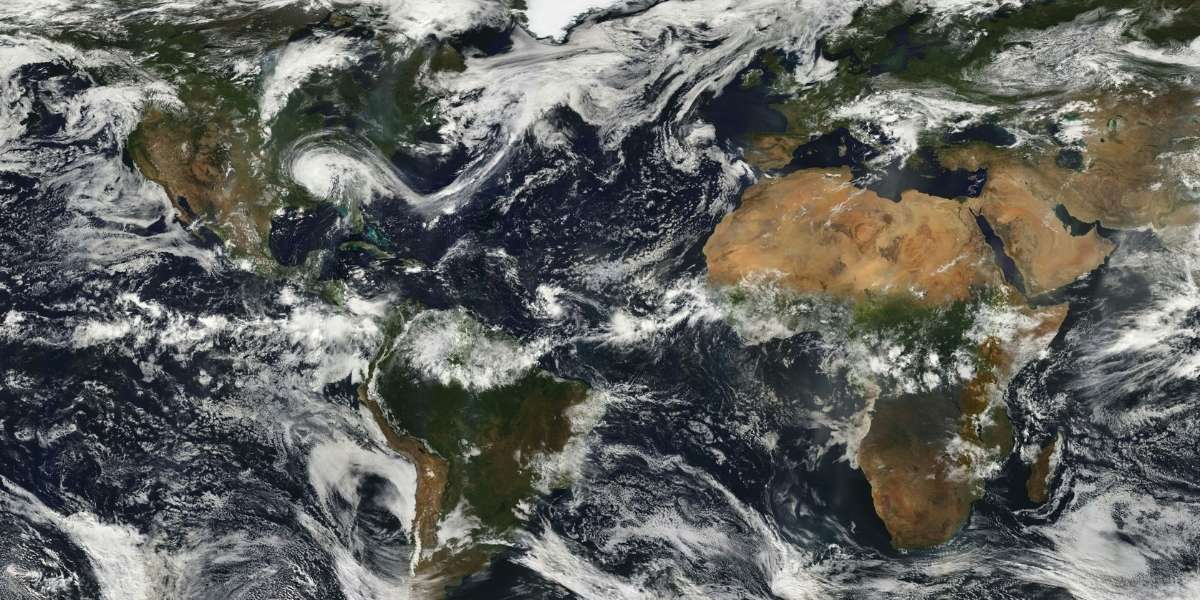Exploring the Hidden Realms of Underwater Caves
Underwater caves, often hidden beneath the surface of oceans, lakes, and rivers, represent some of the most mysterious and awe-inspiring environments on Earth. These natural wonders, shaped over millennia, offer a glimpse into the unseen world beneath our feet. While they are primarily explored by scientists, divers, and adventurers, these caves are far more than just geographical formations—they hold unique ecosystems, ancient secrets, and stunning landscapes. In this article, we will explore the science behind underwater caves, the challenges of exploring them, and the significance they hold for both exploration and conservation.
Read Also: Role of Renewable Energy in Fighting Climate Change
What Are Underwater Caves?
Underwater caves, also known as submerged caves or cenotes, are natural cavities or passageways beneath the Earth’s surface that contain water. These caves form over time through processes like erosion, dissolution, and tectonic activity. In many cases, the water inside these caves is often clearer and more pristine than surface water, offering a unique environment for aquatic life.
There are two main types of underwater caves: marine caves, which are found along coastlines or beneath the ocean, and freshwater caves, which are typically located in inland areas like limestone regions, where the process of erosion dissolves the rock over time.
The most famous of these environments are often found in places like the Yucatán Peninsula in Mexico, where cenotes (natural sinkholes) have long been popular for their beauty and historical significance. Another well-known example is the Blue Hole in Belize, a giant marine sinkhole, which has drawn divers from around the world.
How Do Underwater Caves Form?
The formation of underwater caves is a slow and gradual process. It begins with erosion, where water, often from rain, seeps into the ground and starts dissolving the rock, particularly limestone, which is highly soluble. This gradual dissolution over thousands of years creates cracks, tunnels, and eventually larger caves.
In areas where groundwater is abundant, the process of erosion can create vast systems of underground passageways that later become flooded due to rising water levels. These caves, once dry, are then filled with water, forming the submerged caves we see today. The result is often an intricate network of tunnels and chambers that can be difficult to navigate, yet breathtakingly beautiful.
In some cases, tectonic activity—where the Earth’s crust moves—can also contribute to the creation of underwater caves by shifting and cracking the rock formations.
The Fascinating Ecosystems of Underwater Caves
Underwater caves often host unique ecosystems that are not found anywhere else on Earth. These ecosystems are shaped by the constant conditions of darkness, high humidity, and often limited nutrient availability. The creatures that thrive in these environments have adapted to the harsh conditions, creating an incredible range of life forms that can seem almost alien.
In freshwater caves, species like blind fish, crustaceans, and salamanders have evolved to live without light. These animals often have specialized adaptations, such as heightened senses or the ability to survive on minimal food. One famous example is the Mexican blind cavefish, which has evolved in complete darkness, losing its pigmentation and sight over thousands of generations.
Marine underwater caves, on the other hand, may contain species such as sharks, sea turtles, and marine invertebrates. The combination of deep water, natural shelter, and proximity to nutrient-rich ecosystems often attracts a variety of marine life.
What makes these ecosystems so intriguing is their isolation. Many species living in underwater caves are found nowhere else on Earth, making these environments crucial for biodiversity conservation. They act as “living laboratories” for studying evolution, adaptation, and environmental change.
The Challenges of Exploring Underwater Caves
Exploring underwater caves is not for the faint of heart. These environments present a series of unique challenges that require specialized knowledge, equipment, and training. The most significant challenge is the lack of visibility. Since many underwater caves are located far from natural light, divers rely on artificial lighting, making it difficult to navigate and explore the passages safely.
In addition, underwater caves are often filled with narrow passages, dead ends, and strong currents, all of which increase the risk for divers. Some caves are located in remote areas, requiring long travel times and difficult conditions to reach, while others are deep underwater, requiring advanced diving techniques like cave diving or technical diving.
Silt buildup and low oxygen levels can also present significant hazards. As divers move through the caves, they can disturb the silt on the cave floor, reducing visibility even further and complicating navigation. Tight spaces and the potential for becoming disoriented make cave diving one of the most dangerous types of scuba diving.
The risk of becoming trapped or lost in underwater caves has led to the development of advanced cave-diving training and strict safety protocols. Despite these risks, the rewards of exploring these uncharted realms are vast, with divers often encountering unknown species, unique geological formations, and pristine underwater environments.
Famous Underwater Caves Around the World
There are many notable underwater caves around the world, each offering a unique opportunity for scientific discovery and adventurous exploration. Some of the most famous include:
-
The Blue Hole, Belize: This marine sinkhole, located off the coast of Belize, is one of the most famous underwater caves in the world. It is over 1,000 feet (305 meters) in diameter and 400 feet (122 meters) deep, attracting divers who are keen to explore its clear blue waters and diverse marine life.
-
Cenotes of the Yucatán Peninsula, Mexico: The cenotes of Mexico are natural sinkholes connected to underground river systems, creating stunning underwater caverns. These cenotes were significant to the ancient Mayans, who used them for religious ceremonies, and today they offer divers a chance to explore unique freshwater ecosystems.
-
Waitomo Caves, New Zealand: Famous for its glowworms, the Waitomo Caves offer an awe-inspiring experience for visitors. While primarily a tourist destination, parts of these caves are also explored by experienced cavers and divers, making it an iconic underwater cave system.
-
The Cave of Swallows, Mexico: Known for its large vertical shaft, the Cave of Swallows is not submerged, but it is a massive cave that draws adventurers and cave divers from around the world. Its deep, vertical drops are a popular site for base jumping and caving expeditions.
The Conservation of Underwater Caves and Their Ecosystems
As we uncover the hidden realms of underwater caves, it’s essential to recognize the importance of conserving these delicate ecosystems. Underwater caves, especially those in remote or isolated areas, are highly sensitive to environmental changes. Human activities, such as pollution, overfishing, and climate change, can disrupt the fragile balance of these ecosystems.
Researchers and conservationists are working to protect these underwater treasures by establishing protected areas, limiting human impact, and studying the effects of climate change on underwater cave ecosystems. These conservation efforts are vital to preserving the unique biodiversity found in these caves and ensuring that future generations can continue to explore and study them.
Read Also: Why Gold Still Holds Value in a Changing Economy
A World Below the Surface
Underwater caves are among the most fascinating and enigmatic environments on Earth. From the evolution of unique species to the challenges of exploring these hidden realms, underwater caves offer endless opportunities for discovery. As scientific interest in these ecosystems grows, so too does the need for responsible exploration and conservation.
Whether you are a diver, an archaeologist, or simply an admirer of the natural world, underwater caves provide a glimpse into a world that remains largely untouched by human influence. They are a reminder of the mysteries still hidden beneath the surface, waiting to be explored.








